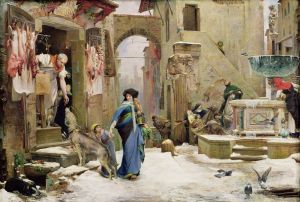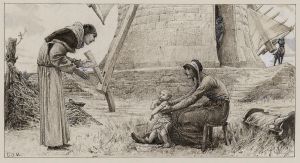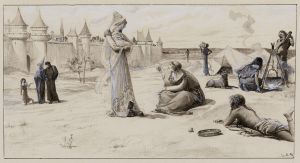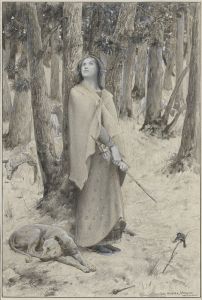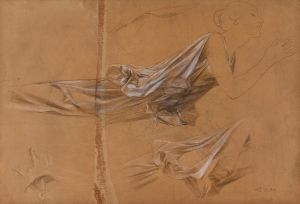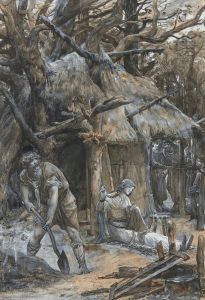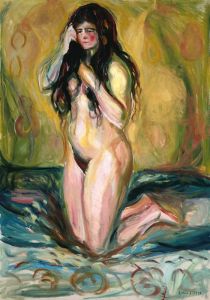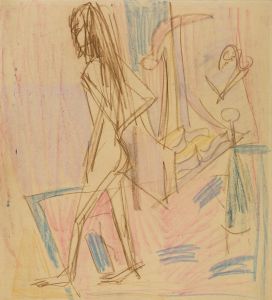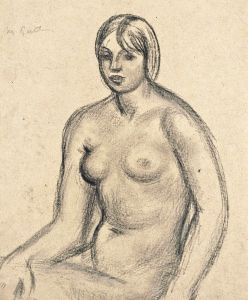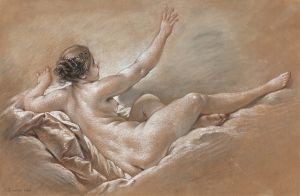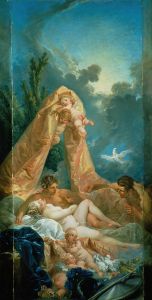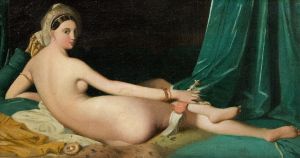
Jeune femme nue
A hand-painted replica of Luc-Olivier Merson’s masterpiece Jeune femme nue, meticulously crafted by professional artists to capture the true essence of the original. Each piece is created with museum-quality canvas and rare mineral pigments, carefully painted by experienced artists with delicate brushstrokes and rich, layered colors to perfectly recreate the texture of the original artwork. Unlike machine-printed reproductions, this hand-painted version brings the painting to life, infused with the artist’s emotions and skill in every stroke. Whether for personal collection or home decoration, it instantly elevates the artistic atmosphere of any space.
Luc-Olivier Merson was a French academic painter and illustrator, known for his detailed and often allegorical works. Born in Paris in 1846, Merson was a prominent figure in the French art scene during the late 19th and early 20th centuries. He studied under Gustave Chassevent-Bacques and Isidore Pils at the École des Beaux-Arts in Paris, where he honed his skills in classical painting techniques. Merson's work often reflected a blend of realism and symbolism, a characteristic feature of the academic art style of his time.
One of Merson's notable works is "Jeune femme nue," which translates to "Young Nude Woman." This painting exemplifies Merson's ability to capture the human form with precision and sensitivity. The artwork depicts a young woman in a state of undress, rendered with a delicate attention to detail that highlights Merson's mastery of anatomy and light. The composition is both intimate and serene, inviting viewers to appreciate the beauty and grace of the human body.
"Jeune femme nue" is a testament to Merson's skill in portraying the nude figure, a subject that has been a central theme in art for centuries. The painting reflects the academic tradition of life drawing, where artists study the human form to understand its structure and movement. Merson's approach to the nude is both respectful and artistic, focusing on the aesthetic qualities of the figure rather than any overt sensuality.
Throughout his career, Merson received numerous accolades for his work. He was awarded the prestigious Prix de Rome in 1869, which allowed him to study in Italy and further develop his artistic style. His time in Italy exposed him to the works of Renaissance masters, which influenced his approach to composition and technique. Merson's paintings often feature historical or mythological themes, rendered with a meticulous attention to detail and a rich color palette.
In addition to his paintings, Merson was also a prolific illustrator. He contributed illustrations to various publications, including books and magazines, where his ability to convey narrative through imagery was highly valued. His work as an illustrator further showcased his versatility and creativity as an artist.
Merson's contributions to the art world were recognized during his lifetime, and he was appointed a member of the Académie des Beaux-Arts in 1906. His legacy continues to be celebrated for his technical skill and his ability to blend realism with imaginative themes.
While "Jeune femme nue" may not be as widely known as some of Merson's other works, it remains an important example of his artistic achievements. The painting captures the essence of Merson's style, characterized by its elegance, precision, and subtlety. Through this work, Merson invites viewers to appreciate the timeless beauty of the human form, rendered with a sensitivity that transcends the boundaries of time and place.





